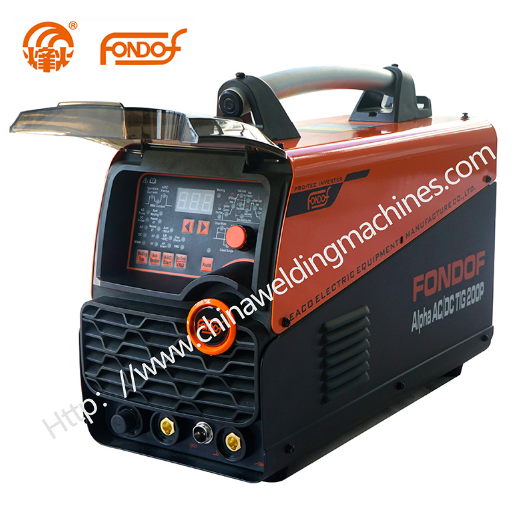AC and DC TIG Welding Machines: Unveiling Precision and Versatility
Tungsten Inert Gas (TIG) welding is a versatile and precise welding process used in various industries. Both Alternating Current (AC) and Direct Current (DC) TIG welding machines play a vital role in achieving high-quality welds. In this article, we will delve into the differences, applications, and benefits of AC and DC TIG welding machines.
TIG welding, also known as Gas Tungsten Arc Welding (GTAW), is a welding process that uses a non-consumable tungsten electrode to create a weld joint. The electrode is protected from atmospheric contamination by an inert gas, typically argon. This process is favored for its precision, clean welds, and versatility in various applications. Two key variations in TIG welding machines are AC and DC, each offering distinct advantages for specific welding scenarios.
Understanding AC TIG Welding Machines
AC TIG welding machines are designed to work with alternating current, where the direction of the electrical flow changes periodically. AC TIG welding is particularly suited for welding aluminum and magnesium alloys. The alternating current allows for effective cleaning of the oxide layer on these materials, ensuring a strong weld joint. This process involves the electrode alternately transferring electrons from the base metal to the electrode and vice versa, which aids in preventing overheating of the electrode.
Applications:
- Aluminum and magnesium alloy welding
- Thin sheets and plates
- Welding on materials prone to distortion
- Welding where heat control is critical
Benefits:
- Efficient oxide removal
- Reduced risk of overheating the electrode
- Effective heat distribution
Understanding DC TIG Welding Machines
DC TIG welding machines work with direct current, where the electrical flow remains constant in one direction. DC TIG welding is commonly used for welding materials like stainless steel, carbon steel, and copper alloys. Direct current provides stable and controlled heat input, making it suitable for achieving precise welds with minimal distortion. DC TIG welding can be further divided into two types: DCEN (Direct Current Electrode Negative) and DCEP (Direct Current Electrode Positive), each with its own set of applications.
Applications:
- Stainless steel, carbon steel, and copper alloy welding
- Welding thicker materials
- Achieving deep penetration welds
Benefits:
- Stable and controlled heat input
- High-quality, clean welds
- Suitable for various material thicknesses
Choosing the Right Machine for the Job
The choice between AC and DC TIG welding machines depends on the specific welding application and material. Here are some key considerations:
- Material Type: Determine the type of material you will be working with. AC TIG welding is best suited for aluminum and magnesium alloys, while DC TIG welding is versatile for stainless steel, carbon steel, and other materials.
- Material Thickness: If you're working with thicker materials, DC TIG welding provides the necessary heat input for deep penetration welds.
- Weld Quality: For applications requiring exceptional weld quality and precision, both AC and DC TIG welding can deliver, but DC TIG welding is often preferred.
- Electrode Consideration: AC TIG welding helps prevent electrode overheating, while DC TIG welding provides more stable and controlled electrode consumption.
- Heat Control: If heat control is a critical factor, especially for thin materials, AC TIG welding might be more suitable due to its oxide removal capabilities.
- Oxide Removal: AC TIG welding's ability to clean oxide layers is crucial for welding aluminum and magnesium alloys effectively.
Conclusion
Both AC and DC TIG welding machines are essential tools in the welding industry, each with its unique strengths and applications. AC TIG welding excels in handling aluminum and magnesium alloys, while DC TIG welding is versatile for various materials and thicknesses. The choice between the two depends on the welding project's specific requirements, ensuring that you achieve optimal weld quality, precision, and efficiency.


Comments
0